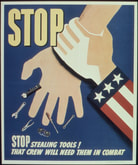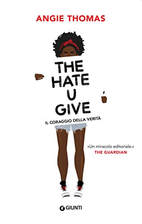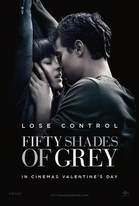|
by Elizabeth DiPietro Young Adult (YA) books often get a bad rap for being shallow, underdeveloped, and cliché. There are huge bestselling series that have transcended to films and television shows that fit that description to a T, which only adds to the idea that YA best sellers are cliché money grabs that uneducated teens are desperate to consume. On August 24, 2017, one author decided to test this limit by attempting to steal the #1 spot on The New York Times Best Seller list.  Photo via Wikimedia Commons Photo via Wikimedia Commons This was a first time, unknown author who saw an opportunity to take advantage of YA readers’ tendency to latch onto bestselling series with fanatical passion. Instead of writing an inventive, well-constructed first book that would create its own buzz and lend itself to future film rights, this author decided to piece together a book that was not only not YA (the main character is in her 20’s), but a book that’s so poorly written that an infamously bad fanfiction author had to publicly come out and say the book wasn’t hers because she didn’t want to be associated with the terrible writing.  YA author Phil Stamper and associates helped stop this author before her attempt got any traction. The book was pulled from the list and Angie Thomas’s The Hate U Give was back at the top where it belonged. So justice was served and the good guy won, but this scandal raised some larger questions. Just how easy is it to con your way onto The New York Times Best Seller list? And if you can con your way there, what weight does being on the list really have? Furthermore, what do these cheating books do to the genre? Since its creation in 1931, The New York Times Best Seller list has carried a reputation of suggesting quality publications, despite the only criteria for making the list being book sales. This idea that "The List" is recommending quality books came out of the idea that only “good” books sell enough copies to place there, but that’s just not what happens. It’s often the books that are the most talked about that sell enough copies to make it. Which used to refer to established authors like James Patterson or Stephen King instantly making The List because of their reputations, regardless of the actual book’s quality, but now means whichever book hits Twitter’s Trending page first. The New York Times Best Seller list has also seen more than its fair share of controversy. Based on their data collection methods, a book can outsell books that appear on the list, but never make the list depending on where those books are purchased from and when. Thanks to wholesalers books can also be double-counted. Sounds like a fair system, right? How easy is it to con The List? So easy it’s not even a new phenomenon. Author manipulation is a tried and true a way to appear on the list. So common, there’s almost no reason to get there organically. Don’t believe me? Author Jacqueline Susann bought large quantities of her own book. Author Wayne Dyer purchased thousands of copies of his. To combat this The New York Times places a dagger symbol next to titles that have bulk orders. But even that isn’t consistent. Tony Hsieh’s Delivering Happiness was found to be bulk-ordered, but never appeared with a dagger on the list. You can even hire a company whose job it is to strategically buy copies of your book and worm your way onto The List. Resultsource is once such company featured in Forbes that will gladly get you on The List if you’ve got enough money. These companies exist. Everyone knows about them. And The New York Times' response? A dagger symbol. Something so small and insignificant most people won’t even consult the key to see what it means. This looks to me like tacit permission by The Times to authors looking utilize loopholes. We live in a world where any attention is good attention, which makes getting on the list organically obsolete. It’s all about money, movie rights, and gaining the kind of fans that will defend even an author’s worst decisions so why let a little thing like “actual sales” get in the way? Thanks to the Kardashians and social media there’s no longer any incentive to be successful or famous for merit, it’s almost more lucrative to be infamous. That’s what this author wanted.  I call it the Fifty Shades of Grey effect, and I’m sure I’m not the first to come up with that. This is when a book that’s widely considered to be poorly written gets attention through controversial means. For Shades it was through the tenuous connection to plagiarism and fanfiction. For this book it’s attempting to scam its way onto the The New York Times Best Seller list. In both cases the authors were aware that their books were not well written enough to ever garner acclaim on their own, so they did what many do and capitalized on negative media attention. What these books then do is infect the canon of YA with poorly written poison. These books aren’t skillfully written. These books don’t have merit in character creation or attempts at originality. They exist solely as that thing that everyone is hating on hoping that through that hate others will want to see what all the fuss is about. Their reputations give YA and the book community in general a bad name and contribute to continued misunderstandings about what YA books can do.
This most recent author is the turducken of book controversy. Not only did she attempt to scam The List, the book is poorly written and comically bad, but even the cover art has been stolen and the artist was never credited. No one could be that stupid right? Right. This is a perfect example of someone attempting to delegitimize the media to justify their own bad actions. This author has come out crying bully, claiming the list succumbed to peer pressure, saying she’s a martyr. So anyone who happens to support her will look at The Times and the book community in general as the bad guy instead of looking at her actions and motives. In our polarized culture, if someone cries bully, no one thinks to look into it. Supporters of this woman will perpetuate falsehoods of her persecution eliminating credibility in a time when credibility has become subjective. The Times is far from innocent. They could be doing a lot more to be clear about their methods, what being on the list means, and clarifying past controversies, but they haven’t. Because much like sex, controversy sells. The Times isn’t going to shy away from an opportunity to be the center of attention. So did this author get what she wanted? Well, the film has been cancelled and the book hasn’t appeared on any lists of note. But the book is floating around the internet, garnering the same kind of hate-reading following that led to Fifty Shades being legitimized and this is yet another controversy that undermines the credibility of the The New York Times Best Seller list. So to me it looks like we’re all losers and will continue to be until the list tightens up and we, as readers, stop allowing ourselves to be taken for a ride by these shitty authors.
0 Comments
Leave a Reply. |
Archives
July 2024
Categories
All
|
|
Glassworks is a publication of Rowan University's Master of Arts in Writing 260 Victoria Street • Glassboro, New Jersey 08028 [email protected] |
All Content on this Site (c) 2024 Glassworks
|

 RSS Feed
RSS Feed
